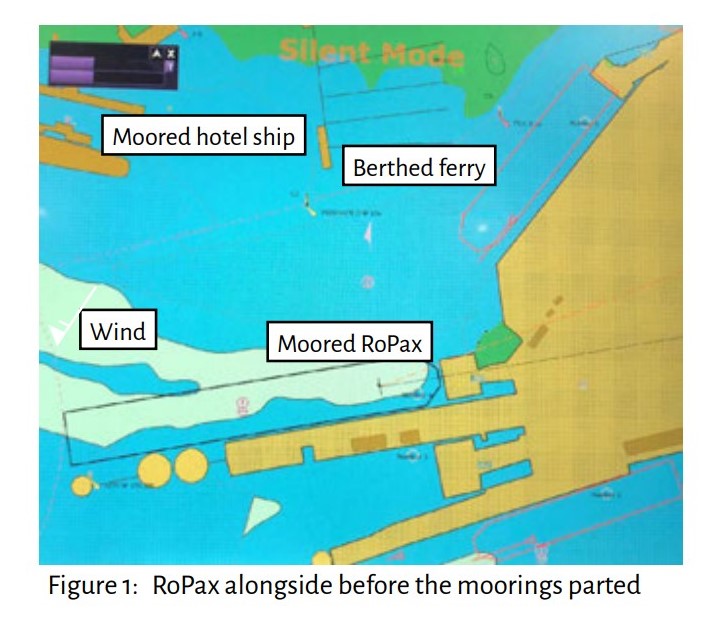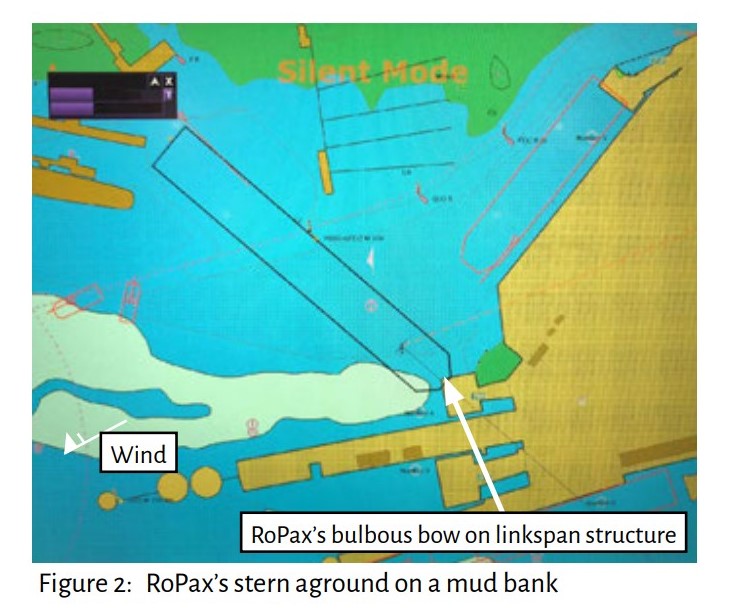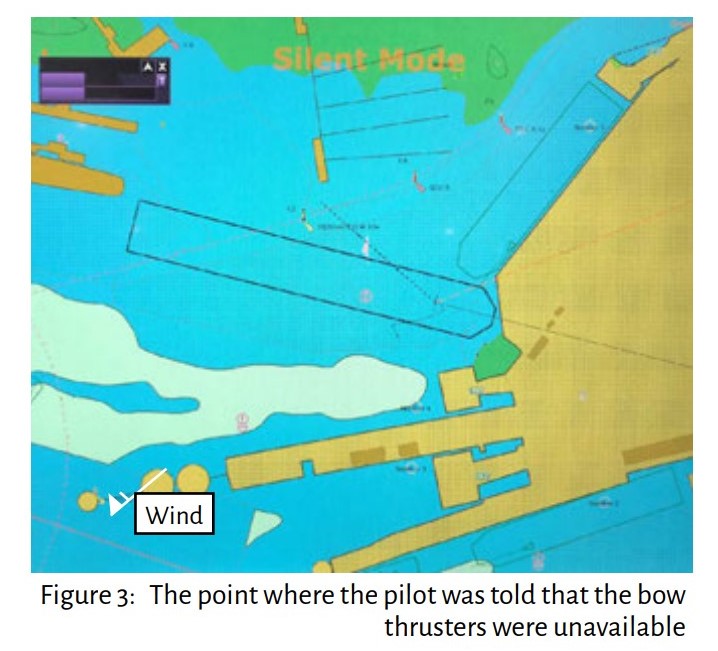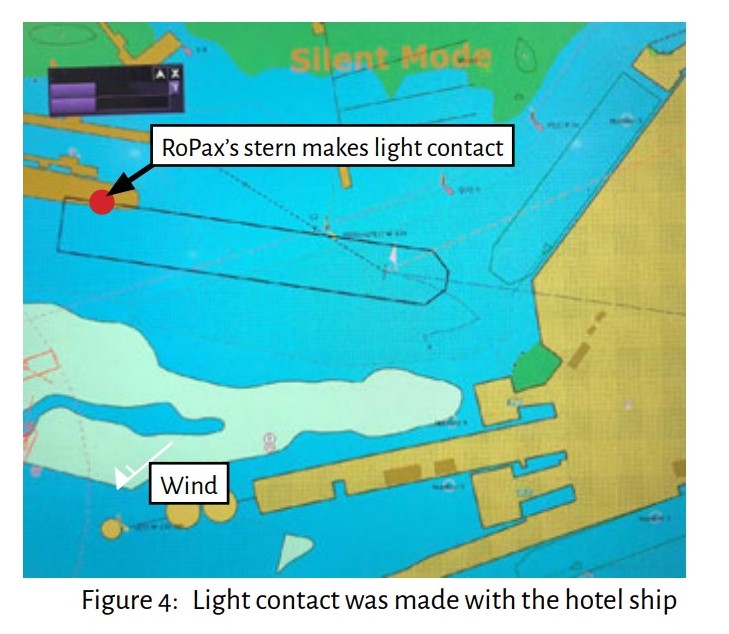UK MAIB issued its first Safety Digest of 2022, in which it describes the efforts of a pilot to control a RoPax that broke free from its mooring, resulting in a light contact with a moored hotel ship as it drifted downwind.
The incident
In the early hours of a stormy winter’s day, a roll-on/roll-off passenger ferry (RoPax), which was laid up for the festive period, broke free from its moorings in winds gusting up to 55 knots (kts) (Figure 1). The master had anticipated storm force, off-berth winds but was confident in the mooring arrangement.

The engines were on immediate standby, and a good lookout was being maintained, so by the time the master had been called and arrived on the bridge the steering and propulsion plants had been brought online.
Unfortunately, the master was unable to regain control of the vessel and to prevent damage to the propellers the engines were declutched as the vessel’s stern grounded on a soft mud bank. The bow was held close to the berth by the linkspan structure (Figure 2).

A pilot boarded shortly afterwards and a plan was discussed and agreed with the master. With two tugs made fast on the starboard quarter, the RoPax’s stern was pulled free of the mud bank. Tugs and the bow thruster were used to manoeuvre it clear of a hotel ship moored astern of their position before the pilot asked for the engines to be clutched in.
Unfortunately, the pilot was unaware that, due to the shaft generator arrangement, the load had to be taken off the bow thrusters before the propellers could be clutched in. The master stopped the bow thrusters, but the pilot was not told, and the bow started to drift downwind toward another ferry berthed nearby.
Noticing what was happening, the pilot asked the master to apply more thrust to be told that it was not possible while the engines were being clutched in (Figure 3).

Concerned that the bow would contact this moored vessel, the pilot ordered the tugs to stop pulling the stern round and shortly afterwards, with astern momentum already in place, the RoPax made light contact with the moored hotel ship as it drifted downwind (Figure 4).

With all engines and thrusters available soon after the light contact, and with the assistance of the tugs, the ferry was berthed without further incident.
A dive survey and damage assessment concluded that the RoPax had suffered minor damage.
Lessons learned
- Margin of safety: The master considered his mooring plan suffcient and had taken steps to increase the readiness of the vessel should engines be needed. However, the almost simultaneous failure of the stern lines meant there was not enough time to get the propulsion plant online before the stern ran aground. The day before, the duty tug had offered to push up against the ferry overnight due to the forecast winds. It cannot be established why the RoPax’s master did not accept this offer, but this incident would have been largely mitigated had the tug been in place. Calculating the strength of a mooring plan based on the nominal breaking strains of the ropes is fraught with danger, and a healthy safety margin should always be employed.
- Communicate: Although the RoPax was aground when the pilot boarded, it was safe and there was time to conduct a full exchange with the master and agree a plan of action. Despite this, and having previously completed movements on the vessel, the pilot was unaware that the bow thrusters would be unavailable while the engines were clutched in. Without this critical piece of information, he had an incomplete mental model of how the manoeuvre would unfold. A well-considered pilot card should act as a prompt for the master to share critical information such as this when a pilot joins the bridge team. In this case, the consequences were fortunately minor.

































































